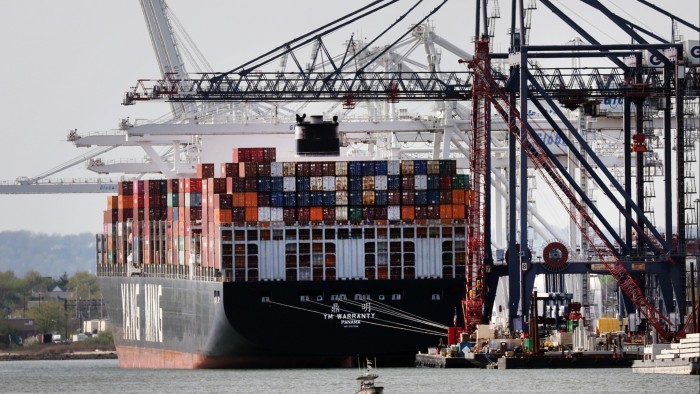Unlock the White House Watch newsletter for free
Your guide to what the 2024 US election means for Washington and the world
Sir Keir Starmer is using a long-standing statistical quirk to bolster his attempts to fend off Donald Trump’s threatened tariffs, relying on US data that shows the UK is one of the few major economies with which America has a trade surplus.
British ministers are focusing on the US data in their discussions with officials in the Trump administration, because its methodology is more helpful to their cause than the UK’s own statistics.
“Using America’s own trade data provides a shared and strong foundation when engaging in discussions with our American friends,” joked one senior British official.
According to US figures, America ran an overall trade surplus with the UK in 2023, amounting to $14.5bn. That puts Britain in a favourable position as Trump threatens tariffs targeting countries with significant deficits.
However, the Office for National Statistics reports that the UK ran a trade surplus with the US of £71.4bn, or around $89bn, in 2023.
Trump has threatened punitive tariffs on countries with which the US runs trade deficits, though his focus appears to be goods rather than services.
While the bulk of the UK trade balance with the US is services, in 2023, the country reported a small goods trade surplus with the US of about $3bn. This still contrasts with the $9.7bn goods trade surplus the US reports with the UK.
Starmer and Lord Mandelson, the new UK ambassador to Washington, are arguing that Trump should spare Britain from any general application of tariffs given the trading position between the two countries.
The statistics offices across the Atlantic are aware of the differences and have been co-operating to realign the data since 2017. Both highlighted how the differences are larger when measuring trade in services.
Trade asymmetries are common and differences “can be caused by a range of conceptual and measurement variations between the estimation practices of different countries,” warned the ONS.
A key issue in the UK-US figures is the treatment of Crown Dependencies, the three offshore island territories in the British Islands that are self-governing possessions of the British Crown.
The US Bureau of Economic Analysis includes trade with Jersey, Guernsey and the Isle of Man in the UK data, while the ONS does not.
Given that Jersey alone hosts over 35,000 financial firms managing more than £450bn in assets, this omission has a material impact.
The US reports exporting $4.8bn more in services to the UK than it imports, while the UK claims to export nearly £70bn more to the US than it imports.
The UK said the exclusion of the Crown Dependencies from the UK trade data is in line with the European System of Accounts.
The US Statistics Office said it “will explore the feasibility of modifying its data collection instruments to exclude these dependencies from its geographic definition of the United Kingdom”. This is something many UK officials might not want to happen just yet.
An analysis by HM Revenue & Customs into US-UK trade asymmetries on vehicles does seem to not settle the issue.
Before 2022, US-origin goods that cleared EU customs in another EU country before coming to the UK were counted as European imports. This makes it harder to compare with US data.
“This explains the negative asymmetry,” the analysis stated.
The study refers to negative asymmetries when US exports of vehicles to the UK are larger than the corresponding UK imports from the US.
From 2022, UK imports from the US on a country-of-origin basis should be comparable with US exports to the UK. “Instead, there is positive asymmetry in 2022, which cannot be explained,” concluded the analysis.
Source link











